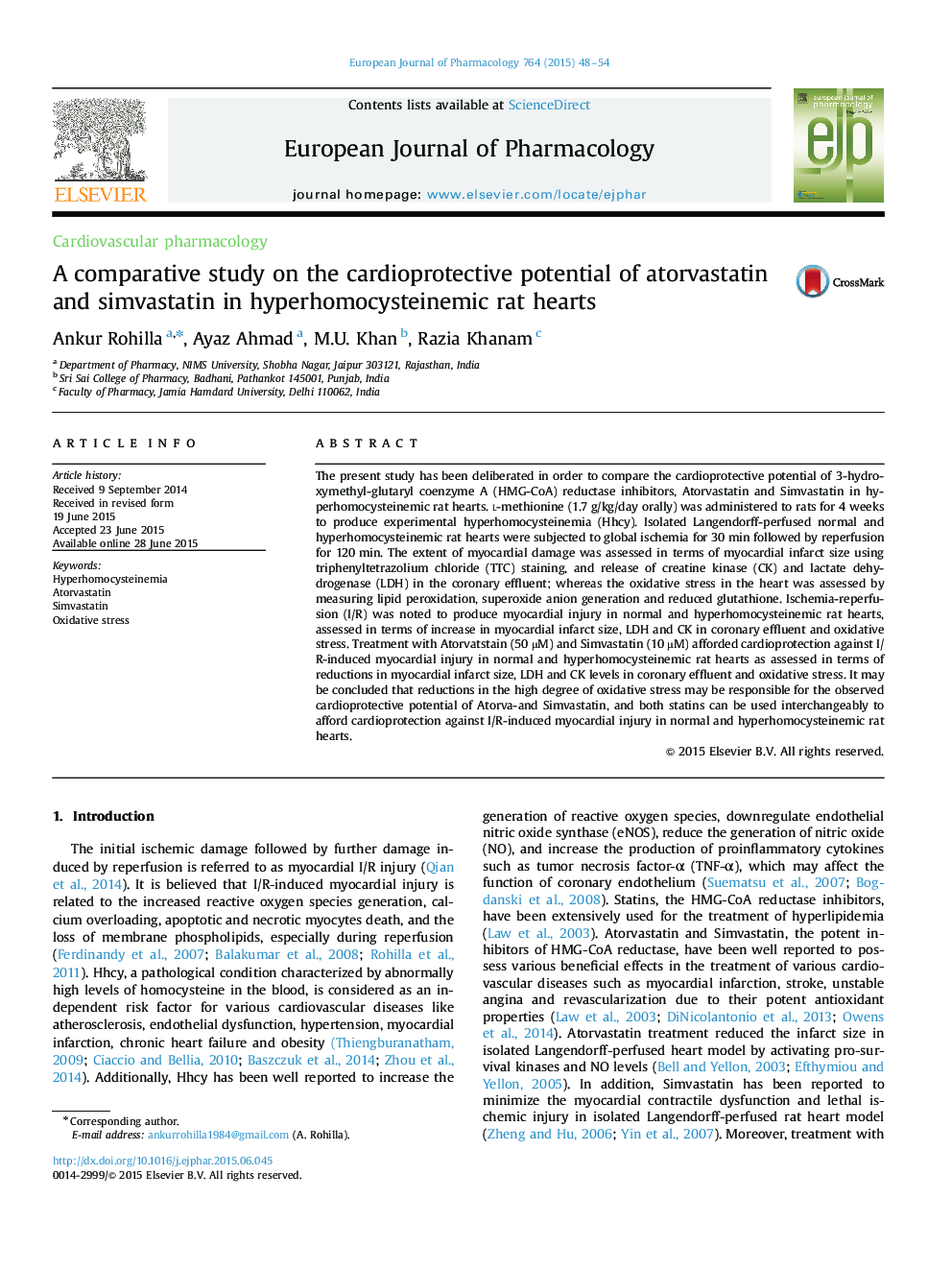| Article ID | Journal | Published Year | Pages | File Type |
|---|---|---|---|---|
| 2531358 | European Journal of Pharmacology | 2015 | 7 Pages |
The present study has been deliberated in order to compare the cardioprotective potential of 3-hydroxymethyl-glutaryl coenzyme A (HMG-CoA) reductase inhibitors, Atorvastatin and Simvastatin in hyperhomocysteinemic rat hearts. l-methionine (1.7 g/kg/day orally) was administered to rats for 4 weeks to produce experimental hyperhomocysteinemia (Hhcy). Isolated Langendorff-perfused normal and hyperhomocysteinemic rat hearts were subjected to global ischemia for 30 min followed by reperfusion for 120 min. The extent of myocardial damage was assessed in terms of myocardial infarct size using triphenyltetrazolium chloride (TTC) staining, and release of creatine kinase (CK) and lactate dehydrogenase (LDH) in the coronary effluent; whereas the oxidative stress in the heart was assessed by measuring lipid peroxidation, superoxide anion generation and reduced glutathione. Ischemia-reperfusion (I/R) was noted to produce myocardial injury in normal and hyperhomocysteinemic rat hearts, assessed in terms of increase in myocardial infarct size, LDH and CK in coronary effluent and oxidative stress. Treatment with Atorvatstain (50 µM) and Simvastatin (10 µM) afforded cardioprotection against I/R-induced myocardial injury in normal and hyperhomocysteinemic rat hearts as assessed in terms of reductions in myocardial infarct size, LDH and CK levels in coronary effluent and oxidative stress. It may be concluded that reductions in the high degree of oxidative stress may be responsible for the observed cardioprotective potential of Atorva-and Simvastatin, and both statins can be used interchangeably to afford cardioprotection against I/R-induced myocardial injury in normal and hyperhomocysteinemic rat hearts.
